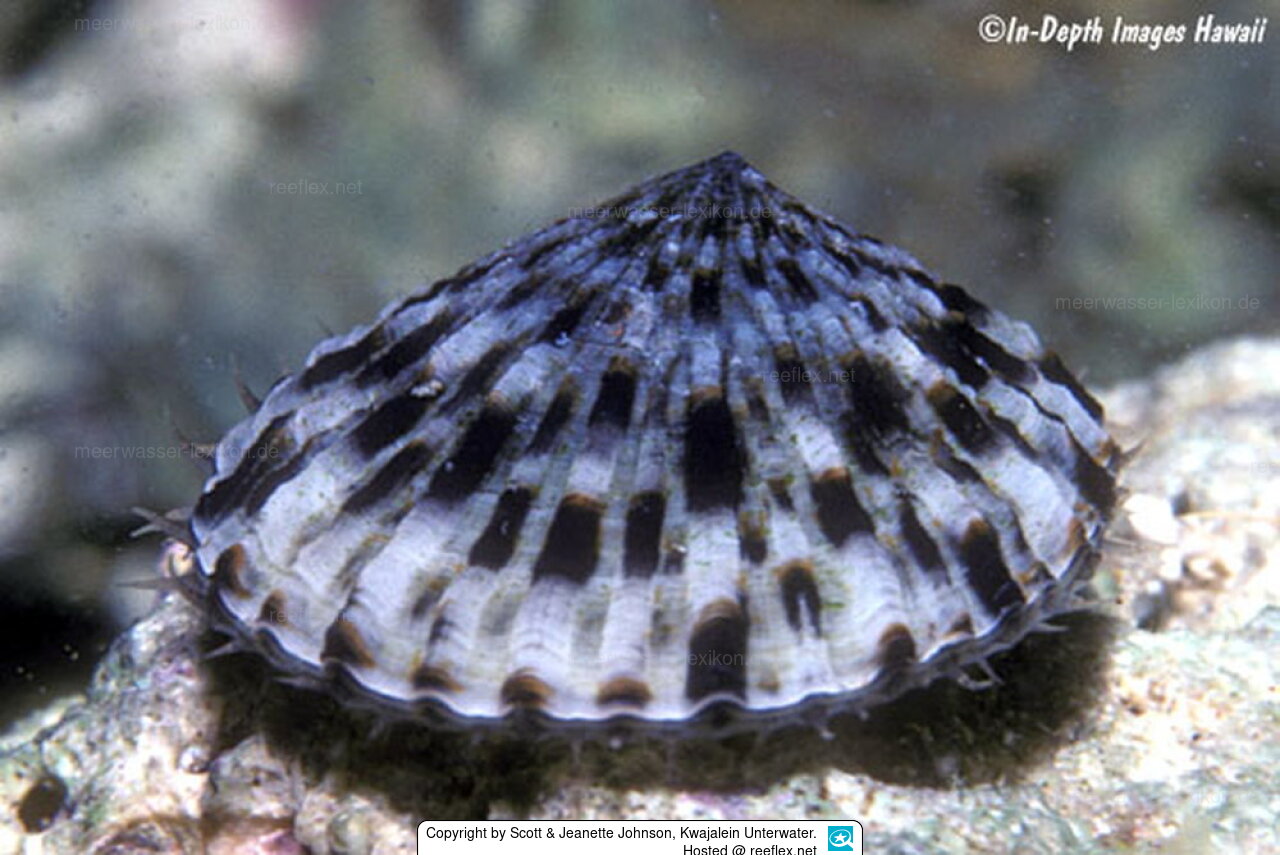Info
Cellana sandwicensis (Pease, 1861)
Cellana sandwicensis is a snail in the family Nacellidae known as limpets. The family includes four genera with occurrences in the Indo-Pacific and southern Atlantic.
The limpet was described from Hawaii and is actually endemic there. In the meantime, the limpet has been found in Taiwan's coastal waters, possibly spread by larvae carried in ships' ballast water.
The animal's large, muscular foot is yellow in the center but gray at the edge. The white head is short and has a pair of tentacles with dark pigment on the back. The flattened shell is dark green on the outside and silvery white on the inside. Their shape is almost oval and the tip is slightly lower than the middle. The ribs radiate from the center and extend beyond the edge.
There is a possibility of confusion with the black-footed limpet Cellana exarata. The yellow-footed limpet Cellana sandwicensis lives deeper in the intertidal zone. They are found firmly, sometimes with considerable force, attached by foot to rocks or other hard surfaces. They feed on algae.
Cellana sandwicensis is used as a food. It is considered a higher quality food than the black-footed limpet Cellana exarata.
In 2009, the Hawaiian legislature passed a bill that would have banned the harvesting of ʻopihi (limpets) on the island of Oahu for five years. The bill was opposed by Gov. Linda Lingle.
Synonymised names:
Patella sandwicensis Pease, 1861 · unaccepted
Cellana sandwicensis is a snail in the family Nacellidae known as limpets. The family includes four genera with occurrences in the Indo-Pacific and southern Atlantic.
The limpet was described from Hawaii and is actually endemic there. In the meantime, the limpet has been found in Taiwan's coastal waters, possibly spread by larvae carried in ships' ballast water.
The animal's large, muscular foot is yellow in the center but gray at the edge. The white head is short and has a pair of tentacles with dark pigment on the back. The flattened shell is dark green on the outside and silvery white on the inside. Their shape is almost oval and the tip is slightly lower than the middle. The ribs radiate from the center and extend beyond the edge.
There is a possibility of confusion with the black-footed limpet Cellana exarata. The yellow-footed limpet Cellana sandwicensis lives deeper in the intertidal zone. They are found firmly, sometimes with considerable force, attached by foot to rocks or other hard surfaces. They feed on algae.
Cellana sandwicensis is used as a food. It is considered a higher quality food than the black-footed limpet Cellana exarata.
In 2009, the Hawaiian legislature passed a bill that would have banned the harvesting of ʻopihi (limpets) on the island of Oahu for five years. The bill was opposed by Gov. Linda Lingle.
Synonymised names:
Patella sandwicensis Pease, 1861 · unaccepted







 Scott & Jeanette Johnson, Kwajalein Unterwater
Scott & Jeanette Johnson, Kwajalein Unterwater








